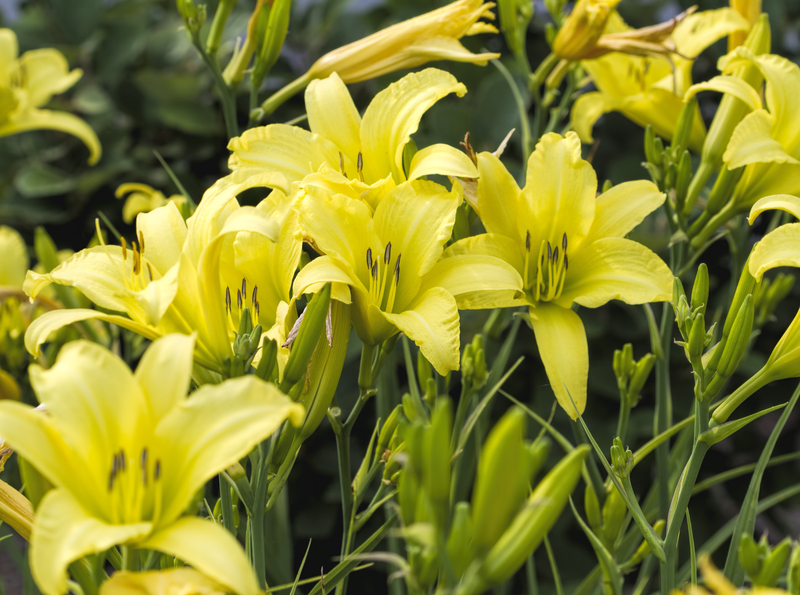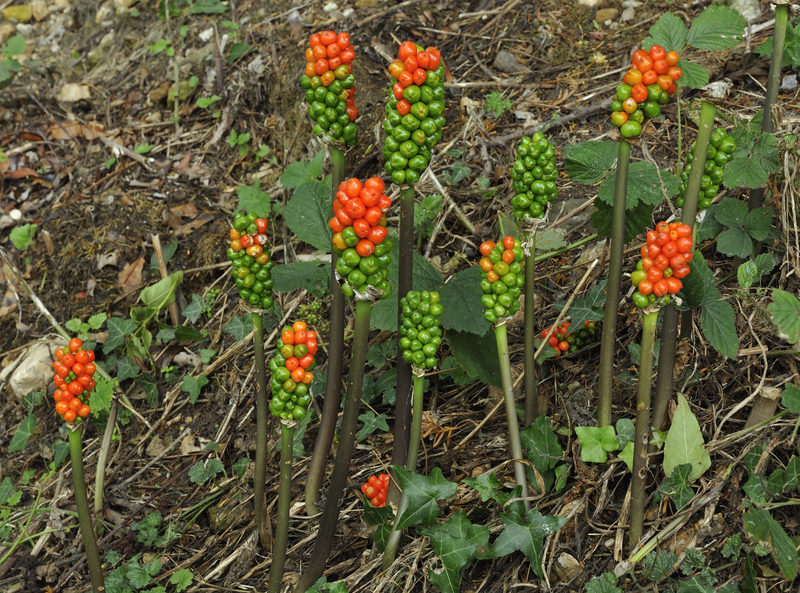Thriving in Turbulence: Strengthening Your Garden's Defenses
Posted on 03/10/2025
Thriving in Turbulence: Strengthening Your Garden's Defenses
Gardens are sanctuaries--oases of beauty and productivity. However, these green havens are often threatened by turbulent weather, disease, and pests. Learning how to strengthen your garden's defenses is essential for any gardener hoping for their plants to not only survive but thrive under adversity. From unpredictable storms and fierce winds to invasive bugs and plant illnesses, a robust defense system can ensure your garden stands resilient season after season.
Why Garden Resilience Matters Now More Than Ever
Gardening is not just about planting seeds and waiting for blooms. In today's climate, defending your garden against ever-changing weather, pests, and diseases is increasingly challenging. With more frequent heavy rains, droughts, and extreme temperature swings, the need to strengthen your garden's defenses is pressing. A resilient garden not only looks better but also yields more, supports pollinators, and minimizes resource loss.
- Climate change brings unpredictable weather patterns.
- New pests and pathogens are appearing in unprecedented numbers.
- Healthy gardens contribute to biodiversity and carbon capture.

Understanding Turbulence: The Threats Facing Your Garden
Garden turbulence can be caused by a spectrum of challenges:
- Weather Extremes: Violent storms, high winds, fluctuating temperatures, frost, and drought.
- Pests: Insects like aphids, slugs, beetles, and mites that attack leaves, stems, and roots.
- Diseases: Fungal, viral, or bacterial infections such as blight, powdery mildew, or wilt.
- Soil Degradation: Erosion, compaction, and nutrient depletion undermine root health and overall plant vigor.
Identifying threats early is the first step to fortifying your garden and ensuring it can flourish under stress.
Building a Defensive Strategy: Key Principles for a Resilient Garden
1. Choose Resilient and Native Plants
Plant selection is the foundation of a sturdy garden. Native and climate-adapted species are more likely to withstand local turbulence, pest attacks, and diseases. They are adapted to your region's rainfall, temperature swings, and soil composition, requiring less intervention.
- Research plant hardiness zones and select varieties proven in your area.
- Include drought-tolerant and storm-hardy options for trouble-prone spots.
- Mix annuals with perennials for continuous defense and stability.
2. Enhance Soil Health
Soil is your garden's immune system. Rich, living soil buffers against turbulence--from excessive rainfall to pest infestations. Feed your soil with the right amendments and it will, in turn, feed and defend your plants.
Strategies for Optimal Soil Health:- Incorporate plenty of organic matter (compost, leaf mold, aged manure) to improve structure and fertility.
- Practice no-till gardening to protect soil organisms and prevent erosion.
- Test soil annually and amend with minerals and nutrients as needed.
- Mulch to regulate moisture, suppress weeds, and shield soil from heavy rain or scorching sun.
3. Intelligent Water Management
Water is both a lifeline and a potential hazard. Effective management helps your garden withstand droughts and floods while optimizing plant growth.
- Install rainwater harvesting systems to collect and store rain for dry spells.
- Use drip irrigation to minimize water waste and prevent fungal diseases associated with overhead watering.
- Design beds with drainage in mind--raise beds or add organic matter in heavy soils to prevent waterlogging.
- Group plants with similar water needs to avoid stress.
4. Structural Defenses Against Wind and Weather
Fierce winds and storms can flatten fragile plants and erode topsoil. Physical barriers offer essential garden protection.
- Plant dense evergreen hedges or install windbreak fences on the windward side.
- Stake or cage tall plants and vines for extra support.
- Use row covers or shade cloths to shield young plants during temperature extremes.
- Lay stepping stones or maintain grassy areas to reduce soil compaction from foot traffic after storms.
5. Integrated Pest Management (IPM)
Pests are inevitable. However, a balanced, eco-friendly strategy will keep populations in check and minimize damage without resorting to harsh chemicals.
- Attract beneficial insects like ladybugs and lacewings by planting pollinator-friendly flowers.
- Manually remove pests and destroy infested plant parts early.
- Rotate crops to break pest and disease cycles.
- Use natural deterrents like neem oil, insecticidal soaps, or diatomaceous earth.
- Encourage birds and toads--nature's pest patrol.
Preventing & Responding to Plant Diseases
Diseases can ravage a garden quickly during turbulent weather. Learning to recognize, prevent, and contain outbreaks is vital for maintaining thriving plants under stress.
- Space plants properly for good air circulation.
- Water early in the day so foliage dries quickly.
- Remove and destroy infected leaves promptly.
- Disinfect garden tools and avoid working in wet conditions to prevent disease spread.
- Choose disease-resistant varieties whenever possible.
Tip: Use copper fungicides or homemade sprays (such as diluted baking soda) as needed, always following label instructions.
Strengthening Your Garden's Biodiversity
Biodiversity is your best insurance policy. A diverse garden community is more robust against turbulence--if one species succumbs, others will persist. Increased biodiversity also attracts helpful wildlife, enhances soil health, and supports overall garden vitality.
- Grow a mix of flowers, herbs, shrubs, and trees.
- Plant for all seasons, ensuring food and shelter for pollinators year-round.
- Integrate vegetables alongside ornamentals to disrupt pest routines.
- Add a small pond or birdbath to invite insect-eating allies like frogs and dragonflies.
Smart Planning and Ongoing Observation
Gardeners who plan proactively and observe constantly are best equipped to meet challenges head-on. Pay attention to microclimates, shifting sunlight, prevailing winds, and local pest patterns. Keep a garden journal--it's invaluable for tracking issues and successes season after season.
- Map your garden to identify vulnerable spots (low areas, windy corners, shaded zones).
- Note bloom times, pest occurrences, and disease outbreaks, adjusting plant combinations yearly.
Embracing Organic Methods for Stronger Defenses
Organic gardening not only safeguards your garden's defenses but also protects your health and the environment. Avoid synthetic pesticides and fertilizers whenever possible. Instead, enrich your soil naturally, nurture beneficial wildlife, and focus on long-term resilience rather than short-term fixes. You'll see healthier plants and fewer problems as a result.
- Make your own compost from kitchen scraps.
- Mulch with straw, leaves, or bark for natural weed and moisture control.
- Ferment nettle or comfrey tea as a potent plant tonic.
Responding to Turbulence: After the Storm
Steps to Strengthen Your Garden's Resilience Post-Disaster
- Survey the Damage: Walk your garden after heavy storms or heatwaves, checking for fallen branches, soil erosion, and plant injuries.
- Remove Debris: Clear out broken stems and leaves to prevent disease and allow sunlight in.
- Repair Structures: Straighten supports, repair fences, and replace mulch where needed.
- Amend Soil: Replenish lost nutrients with compost and minerals.
- Prune Wisely: Trim damaged plants to healthy growth, encouraging regrowth and reducing stress.
- Replant and Rotate: Replace lost crops with opportunistic sowings; rotate crops to new locations for next season's resilience.
Creating a Year-Round Defense Calendar
Strengthening your garden's defenses is a year-round endeavor. Follow this seasonal guide:
- Spring: Prepare beds, test soil, plant disease-resistant varieties, set traps for early pests.
- Summer: Mulch against drought, use shade cloth, monitor for insects and cut off diseased foliage.
- Fall: Plant cover crops, clean up debris, compost, amend soil.
- Winter: Protect with row covers or mulch, plan crop rotations, review last year's journal.
Innovative Tools for Strengthening Garden Defenses
Modern technology is empowering gardeners to fortify their gardens against turbulence like never before. Consider integrating some of these tools:
- Soil sensors: Monitor moisture and nutrient levels in real time.
- Automated irrigation: Water only when needed, even during absences.
- Plant health apps: Diagnose diseases with AI-powered tools via smartphone photos.
- Pollinator houses: Attract essential bees, butterflies, and ladybugs.

Frequently Asked Questions: Building Garden Resilience
- What are the best plants for turbulent gardens?
Opt for native perennials, drought-tolerant herbs (like lavender and sage), and deep-rooted grasses. Research local climate champions. - Can organic gardens be as strong as conventional ones?
Yes! In fact, organic gardens often outperform conventional ones under stress by nurturing stronger soil life and biodiversity. - How can I protect my garden in sudden cold snaps?
Use frost cloths, mulch, or even upturned buckets for small plants. Water well before the freeze--moist soil holds warmth better.
Conclusion: Cultivating Resilience for Long-Term Thriving
Strengthening your garden's defenses is about more than fighting threats--it's about creating a system that adapts, regenerates, and thrives no matter what nature throws its way. By blending traditional wisdom, biodiversity, organic techniques, and smart planning, you'll transform your garden into a lush, resilient sanctuary.
With vigilance, creativity, and a proactive approach, your garden will not just survive turbulence--it will thrive in it, providing beauty, bounty, and a sense of accomplishment all year round.
For more guides on building a resilient, thriving garden, subscribe to our newsletter and join a growing community of passionate, well-informed gardeners.

